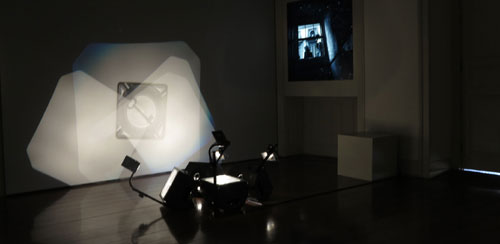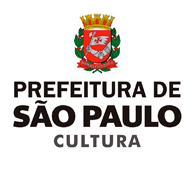
Sabotagem
Márcia Xavier + Letícia Ramos
Casa da Imagem
20 de setembro a 26 de outubro de 2014
Terça a domingo, das 9 às 17h
Quando Leticia Ramos e Marcia Xavier escolheram, no vasto acervo da Casa da Imagem, as fotos de destruição de uma sala de arquivos como ponto de partida para sua exposição conjunta naquela instituição, não sabiam bem do que se tratava.
Sabotagem? Vandalismo? Queima de arquivo?
As fotos, em preto e branco, traziam marcas da época e das circunstâncias em que foram tiradas. Mais do que um enfoque jornalístico, pareciam registros da ocorrência feitos pela polícia. Os grandes arquivos de metal com documentos de papel envelhecido sugeriam um cenário de meados do século passado.
Conseguiram localizar, num dos processos espalhados pelo chão do local depredado, o ano de 1944. Nas fichas da própria Casa da Imagem viram que a ocorrência se dera na sede da Prefeitura de São Paulo.
Pesquisando jornais da época (entre 1944 e 1950), encontraram, em O Estado de S. Paulo de 02/08/1947, a referência precisa na manchete: “Incêndios, apedrejamentos, correrias, tiroteios nas ruas e praças de São Paulo”, com o subtítulo: “Apedrejada e depois assaltada a sede da prefeitura na Rua Líbero Badaró”.
Viram então que se tratava de um desdobramento de manifestações de protesto contra o aumento de tarifas dos transportes coletivos naquele período. A assombrosa coincidência com o que ocorreu em São Paulo no primeiro semestre deste 2014 foi mais um dos laços de uma rede de investigações documentais e instigações artísticas, que as foi motivando.
A partir desse quebra-cabeça de fatos e fotos, Marcia e Leticia foram concebendo este ambiente-instalação, onde seis retroprojetores; um backlight composto com a luz de uma das janelas; um olho mágico; sons pré-gravados e microfones que captam ao vivo os passos de quem entra; um filme produzido e projetado em 16 mm, simulando fatos que apenas se intuem; e uma sequência de fotos estroboscópicas de um arquivo caindo no espaço compõem a densa e tensa atmosfera de sabotagem.
O motor dessa criação não é a crônica, a fidelidade aos fatos ou a crítica social daquele contexto, mas a transmutação de vestígios e indícios em experiência sensível, no tempo presente.
Não há uma narrativa clara, mas a apropriação de um universo de referências para criar um ambiente, a partir do qual eclodem sensações de deslumbre e medo, beleza e ameaça, vertigem e violência, ordem e desordem. Rastos, sinais, acenos de fatos ocultos. Como um filme noir sem enredo.
Diferentemente do “seja marginal/seja herói” de Hélio Oiticica, a apropriação aqui do universo criminal (ou da ruptura das normas sociais) não surge impregnada de um viés ideológico. Parece apenas uma inspiração.
A relação se faz mais por uma associação metonímica, em que as fotos não apenas passam a fazer parte da instalação (alteradas por projeções, distorções e aparelhos ópticos), mas também servem de impulso para a constituição de sua atmosfera. Manchas de caos no tecido da ordem social, motivando a alteração de nossas estruturas cognitivas preestabelecidas.
Em vez de uma mensagem, um clima. Em vez de uma narrativa, uma experiência sensorial – que envolve o visitante em som, luz, imagem, tato. Sabotagem dos sentidos.
O fato desse ambiente ser instaurado justamente numa instituição cuja finalidade é manter um acervo organizado de imagens antigas (memória materializada) estabelece um paradoxo que subverte nossa percepção do real.
Essa subversão evoca algo de sublime, ao nos jogar na vertigem de uma desordem atávica, instaurada num espaço de ordem onde estava arquivada sua fagulha.
Arnaldo Antunes
When Leticia Ramos and Marcia Xavier chose, from the vast collection of Casa da Imagem, the photographs of destruction of an archive room as a starting point for their conjoint exposition in that institution, they didn't know what those photographs were about. Sabotage? Vandalism? Destruction of evidence?
The black and white photographs carried marks of the time and circumstances in which they were taken. More than a journalistic approach, they looked like police records of the incident. The large metallic filing cabinets full of old paper documents suggested a scenery from the middle of the last century.
They could locate, in one of the documents spread across the floor of the destroyed place, a year: 1944. In the very files of Casa da Imagem they found that the incident happened at São Paulo's City Hall's head office.
By research in newspapers of that time (from 1944 to 1950), they found, in O Estado de S. Paulo of August 2, 1947, the exact reference in the headline: “Fires, stonings, forays, shootings on the streets and squares of São Paulo”, along with: “The City Hall's head office on Líbero Badaró Street was stoned and then assaulted”.
Then, they discovered it was the aftermath of the protests against the rise of mass transit's fares at that time. The astounding coincidence with the events that took place in São Paulo in the first semester of 2014 was one more link in a net of documentary investigation and artistic instigation, which motivated the artists.
From this puzzle of facts and photographs, Marcia and Leticia started to conceive this environment-installation, where six overhead retroprojectors; a backlight with the light from one of the windows; a peephole; prerecorded sounds, and microphones that capture in real-time the steps of the ones that enter; a film produced and projected in 16 mm simulating facts that can be only intuited; and a sequence of stroboscopic pictures of a filing cabinet falling in space compose the dense and tense atmosphere of sabotage.
The motor of this creation isn't the chronicle, the fidelity to the facts, or the social criticism of that context, but the transmutation of vestiges and clues into a sensitive experience, in present time.
There is no clear narrative, but an appropriation of a universe of references in order to create an environment from which hatch sensations of dazzle and fear, beauty and menace, vertigo and violence, order and disorder. Traces, signs, nods of hidden facts. Like a film noir with no plot.
Different from Hélio Oiticica's "seja marginal/seja herói" ["be an outlaw/be a hero"], this appropriation of the criminal universe (or the breaking of social norms) doesn't come impregnated with an ideological bias. It seems only an inspiration.
The relation is made more by a metonymic association, in which the photographs not only become part of the installation (changed by projections, distortions, and optical devices) but also serve as an impulse to the constitution of its atmosphere. Spots of chaos on the tissue of social order, motivating the changing of our preestablished cognitive structures.
Instead of a message, a mood. Instead of a narrative, a sensorial experience – which wraps the visitor in sound, light, image, touch. Sabotage of the senses.
The fact that this environment is set precisely in an institution which purpose is to keep an organized collection of old images (materialized memory) establishes a paradox that subverts our perception of real.
This subversion evokes something sublime when it throws us in the vertigo of an atavistic disorder, set in the orderly space where its spark was archived.


